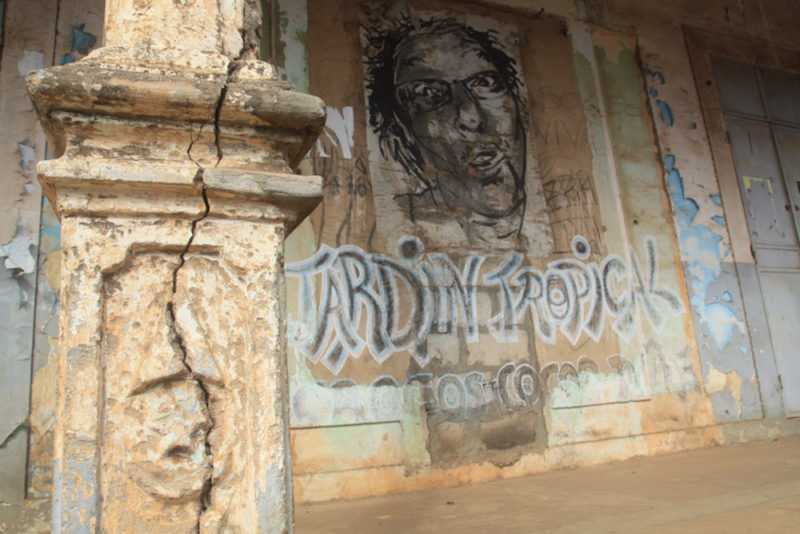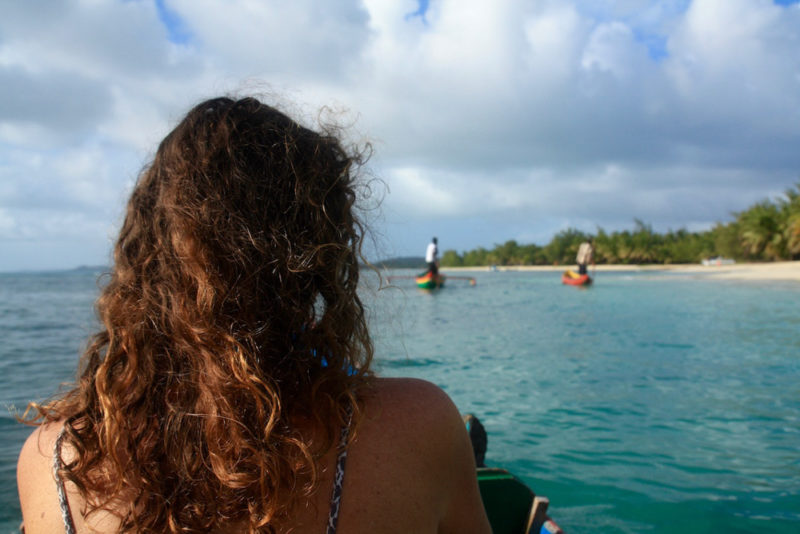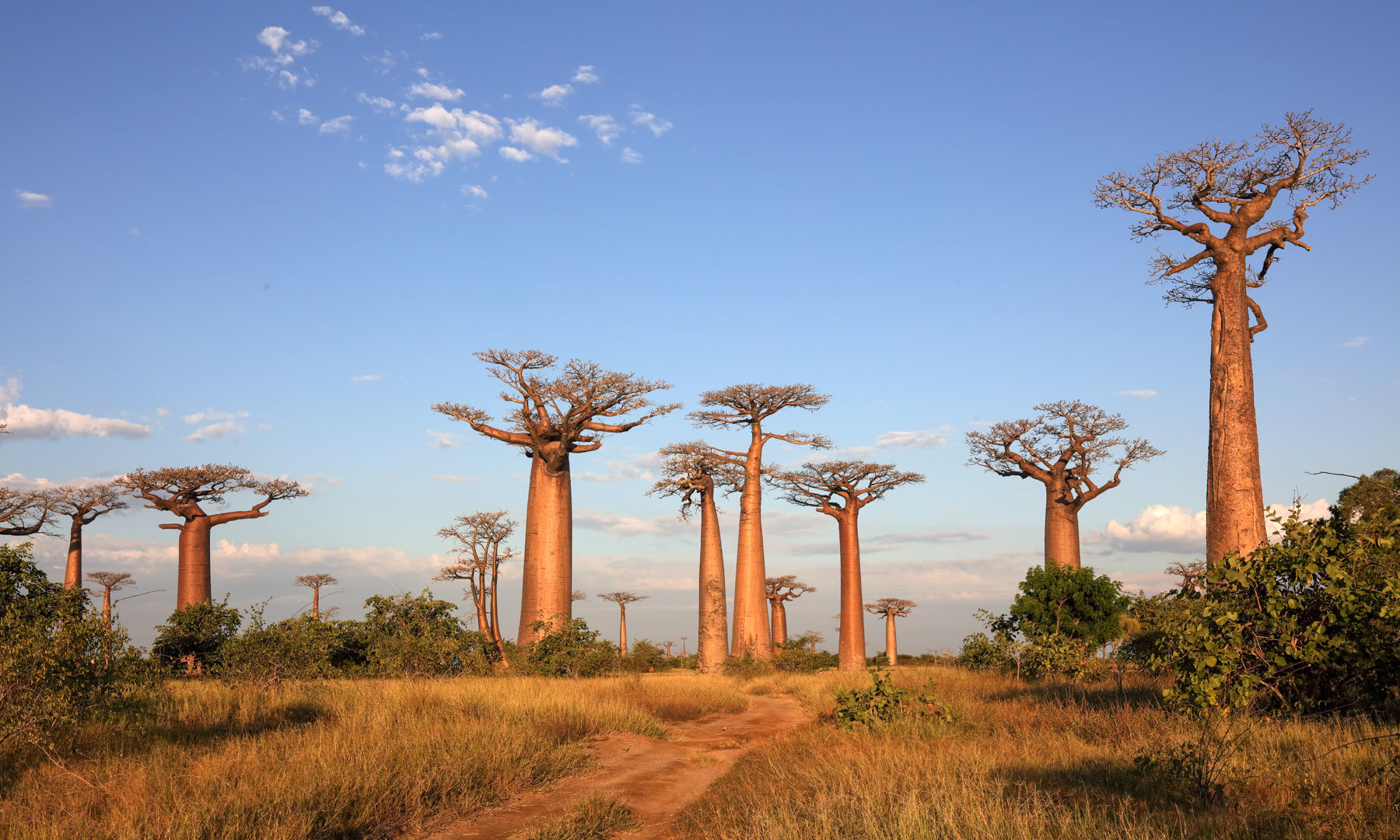Madagascar feels like a far far away land. That is because it is! Located off the eastern coast of Africa across from Mozambique, Madagascar is the world’s fourth-largest island. And with nearly 90% of wildlife endemic to the island, Madagascar should be high on your bucket list.
Don’t worry, we’ll get you there with this complete guide to Madagascar!
From rainforests to beaches, wildlife, and astonishing rock formations, there is a diverse range of sights to explore. But sadly, Madagascar is one of the world’s poorest nations, resulting in a poverty-stricken country that is also very cheap. Its infrastructure is some of the worst in the world, with a 120-mile journey sometimes taking an entire day to complete.
Because of the poor infrastructure and low costs, it is best to visit Madagascar for a long period, making it a wonderful backpacking destination. There are only a couple of well-developed areas, in particular Nosy Be, which is a common holiday destination.
Madagascar was a French colony until 1960 when it gained its full independence. As a result, the most common visitors to Madagascar are French nationals. There is a lot of French influence still today in Madagascar, especially related to its language.
Many French ex-pats have opened hotels and restaurants so the French food in Madagascar is delicious! Our favorite towns – Antsirabe and Diego Suarez – have an excellent culture, cheap accommodation, and excellent food.
Read on to learn all about the complete guide to Madagascar!
Content and photographs provided by Yana Kogan and Timon.
Disclaimer: This post may contain affiliate links. If you make a purchase or booking through one of our links we may earn a small commission (don’t worry, it’s at no extra cost to you).
Best Time to Visit Madagascar
The best time to visit Madagascar is during the dry season between April and November. The wet season is best avoided. Rain is very heavy and the island experiences cyclones between December and March.
Like many countries, Madagascar has in place COVID travel restrictions. You have the option to present a negative PCR test performed 72 hours before boarding, or you can test upon arrival. But check with the airline first, just in case. If you decide to test upon arrival, you’ll need to pay for the test at your own expense and self-isolate until the results are available.
How to Get to Madagascar

Madagascar is not easy to get to and flights are expensive. There are not many places that fly directly to Madagascar, including Paris, Addis Ababa, Nairobi, and Johannesburg. Flights are also available from Mauritius, Seychelles, Reunion, Comoros, and Mayotte, but flying through these places is typically expensive.
We were able to score a multi-destination flight with Air Kenya that originated in Nairobi with stops in Mauritius, Madagascar, and Seychelles for only $350 USD. If you are exploring the region for a long time, make sure to check different options as there are often deals on multi-destination flights.
Internal flights in Madagascar are a monopoly with Air Madagascar. They are known for lengthy delays (or cancellations) and flights usually cost $300 USD one-way.
Visa for Madagascar

An electronic visa (eVisa) will be required for tourists. The eVisa application is available online and valid for up to 90 days. Visitors will need to complete the online registration to receive a landing authorization to present on arrival at the eVisa ticket counters. The eVisa rates are:
- 30 days: $37 USD or 35 EUR
- 60 days: $45 USD or 40 EUR
Language

Malagasy is the national language of Madagascar and there are many regional dialects. It was a French colony up until its independence in 1960, so French is the official second language. But in rural locations, many do not speak French.
English is rarely spoken in rural areas. From a language standpoint, Madagascar was one of the most difficult places we have ever traveled to. We would recommend learning some basic words in French as well as common numbers.
Currency

Madagascar uses the Ariary (Ar) which was introduced in 2005 as the national currency. It is the same bill as their earlier currency, the Malagasy Franc. Many locals, especially in the countryside, still use the Franc when quoting prices. The conversion from Franc to Ariary is 5:1. Typical Costs in Madagascar are as follows:
- Street food ranges from 500 – 2,500 Ariary for meals
- Beer typically cost 3,000 Ariary
- Budget hotels range from 20,000 – 35,000 Ariary.
As of March 2022, the Ariary is worth:
- $1 = 4,047 Ariary
- €1 = 4,474 Ariary
Best Sim Cards in Madagascar

Telma is the largest, most reliable, and cheapest cell phone provider. However, Orange was our preferred network to use for data. Sim cards cost 3,000 Ariary, and credit is available throughout the country at street vendors and shops. Credit is available in 1,000 Ariary intervals, which is good for about 50 MB of data.
Hotels

Hotels in Madagascar are very cheap and possibly some of the best for the budget prices. Good rooms cost between 20,000 and 35,000 Ariary. Warm showers are a rarity and the “Malagasy shower”, a simple bucket shower, was quite common. Western toilets were not always found, and if they were, they rarely were inclusive of the much sought-after toilet seat.
Where to Stay in Madagascar on a Budget

- Fianarantsoa – Residence Matsiatra is around $20/night for a private room
- Manakara – Chez Zizou costs $20 for very basic bungalows on the beach
Food in Madagascar

Madagascar has many ex-pats, so there are excellent restaurants on the island, and the Italian and French cuisine is particularly amazing.
Zebu (beef) is the national dish and is incorporated in all cuisines. The local cuisine is served at “hotelys” and street vendors. Hotelys are small local restaurants, common in most towns. Dishes are typically an enormous plate of rice and a small side of meat, either zebu, pork, or chicken. Occasionally, mine sao (fried noodles) or beans are available.
In the morning, several street vendors sell coffee and fried dough (which is delicious). Throughout the day, it is common to find vendors with fried snacks, such as samosas, fried bananas, or fried vegetables.
Typical costs for food are:
- Fried snacks: 100 to 200 Ar
- Coffee: 200 to 300 Ar
- Small meals: 1,000 Ar
- Hotely meals: 2,500 to 4,000 Ar
Food-Related Illness

Madagascar has very poor health standards, bad sanitation, and a lack of refrigeration. Food is often prepared in large quantities, days in advance, and sold until it is finished. The inevitable result is that you will likely have an upset stomach with a bout or two in the toilet. Don’t worry, everyone here is in the same boat, so you are not alone.
Taking a Taxi Brousse

Taxi brousses are the main method of public transportation in Madagascar. A taxi brousse is a mini-bus that can range from somewhat new to somehow surviving. You never know what to expect; music blasting, chickens on the floor, dead fish on the roof, luggage packed in everywhere, and babies sleeping half on your lap. It is surely an adventure, and Madagascar cannot be visited without at least one taxi brousse ride!
Be ready to get bombarded and harassed at every taxi brousse station. Always look around at several options, inspect the bus, and go with the one that is almost at capacity as they do not leave until they are full.
Regional vs. National Taxi Brousse

This is critical. Regional buses are of lower quality and they pack in as many people as possible. If they have room, even when you swear it is not possible, they will stop and pick up more people. At one such stop, we saw two grown men who did not know each other, sit on one another’s lap. National companies do not pack people in and each person has an assigned seat.
Factors When Picking a Taxi Brousse

- Look at the tires. Do they look like they can make it to your destination? Make sure they have tread.
- Can they put your bag inside in the trunk space verses on the roof?
- Can you get a seat next to a window that opens?
- Are you sitting right next to the only working speaker?
- Is the taxi brousse almost full?
These may sound like minor factors, but then you have one of “those” taxi brousse rides. “Those” rides take eight hours when it should take three. They put dead fish on the roof on top of your bags. It is 90 degrees and humid and no one likes to open their windows, because its “winter.” Music is blasting out of the only speaker right above your seat.
These are not made up, these happened to us and it can happen to you too. Picking a taxi brousse is part art, part science. It’s best to just mentally prepare for a long and stressful day and cross your fingers that you’ll actually get to your destination. Aside from all those things, it’s absolutely great, I swear.
Taxi Brousse Pricing

- Tana to Antsirabe: 12K
- Morondova to Antsirabe: 30K
- Antsirabe to Fianarantsoa: 15K
- Tsaronuru to Ambalavao: 3K
- Ambalavao to Ranahiro: 20K
- Ranahiro to Toliara: 23K (no taxi browse station in Ranahiro, book the day before with a hotel or one of the touts in town)
- Toliara to Anakao Ferry: 50K each way
- Toliara to Tana: 52K by Taxi Brousse 120K by private car
- Tana to Andasibe: 15K
- Andasibe to Tamatave: 14K
- Tamatave to Ile Saint Marie (bus and ferry transfer): 70K
- Tamatave to Tana: 20K
- Tana to Diego Suarez: 70K
Madagascar Itinerary Recommendations

The biggest variable when visiting Madagascar is the travel time between destinations. The taxi brousse is pretty reliable; however, the drive will incur long hours. For those with a limited holiday, it is best to hire a personal car and driver.
West Madagascar: Baobabs and the Grand Tsingy

The west of Madagascar has two of the main highlights, Tsingy de Bemaraha and the Avenue of the Baobabs. An excellent way to visit the west is on a seven-day tour that includes a few days on a traditional pirogue (boat) floating down the Tsiribihina River.
Tsingy and the Avenue of the Baobabs are two of the most popular places to visit in Madagascar and a highlight that should not be missed.
East Madagascar: Jungle and Beach

The east of Madagascar is a very desirable part of the country, with excellent rainforests and beaches. Near Antananarivo, Andasibe is a rainforest with great walking tours. Continue to the coast to Ile Saint Marie and the paradise island of Ile Aux Nattes.
South Madagascar: Hiking and Beach

Due to better road infrastructure, visiting the south is the most popular route for tourists. The itinerary usually visits Antsirabe, Ambalavao, Anja Park, Isalo National Park, and one of the beach towns near Toliare, such as Anakao or Ifante.
While this is very popular, this was our least favorite part of the country. The only exception was hiking the Andringitra Mountains near Ambalavao.
North Madagascar: Rainforest, Rock Formations, and Beaches

The north is much more laid back than the rest of the country. Most of the north is concentrated around Diego Suarez and Nosy Be. Nosy Be is expensive and a popular resort island. Diego Suarez is a great colonial city with excellent sites nearby.
Main activities include a visit to Ramena, a boat ride to Emerald Bay, hiking the Three Bays, and a day trip to Tsingy Rouge and Amber Mountain.
Best of Madagascar

- Avenue of the Baobabs
- Andasibe rainforest
- Ile Aux Nattes
- Andringitra mountains
- Tsingy Rouge
That’s the complete guide to madagascar – we hope you have an amazing visit to this beautiful country!
Planning a trip to Madagascar? Check out our favorite books and travel guides!
SHARE THIS ON PINTEREST









Hi
Your trip sounds great, thank you very much for sharing all this helpful information.
How was it with the safety? Did you always feel save? Or did you hear of tourists getting robbed?